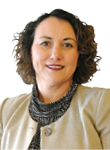
School-University Collaboration Offers Expansive Learning
 By: Lorena Claeys and Belinda Bustos Flores, UTSA
By: Lorena Claeys and Belinda Bustos Flores, UTSAPublic school and university collaborative partnerships are key to transforming and engaging in innovative teaching and learning practices. Over the last 11 years, the Academy for Teacher Excellence (ATE), housed in the College of Education and Human Development at the University of Texas at San Antonio (UTSA), has sponsored 46 after-school informal learning clubs in collaboration with nine San Antonio-area public schools populated largely by Latino/a and ESL students. Through these clubs, ATE supports and promotes the teaching profession, particularly STEM education.
Modeled after University of California professor Olga Vásquez’s La Clase Mágica (LCM), the program is designed to promote literacy and cognitive development among elementary school-aged children. Using the LCM framework, ATE’s informal learning clubs make educational activities relevant to learners by incorporating the varied linguistic and cultural resources of Latino/a communities. This approach values and promotes learners’ bilingualism, biliteracy, and biculturalism. Participating undergraduate teacher candidates and STEM majors at UTSA are able to engage in hands-on experiences working with young learners in three clubs with special curriculums developed by UTSA’s education researchers. Each club employs research-based theoretical principles to create effective after-school activities and uses specialized tools to engage learners in the acquisition and construction of knowledge and skills. A robotics club (Schutze, Claeys, Flores, & Sczeck, 2014) allows students the opportunity to learn basic coding and engineering skills. LCM (The Magical Class—a Bicultural-Bilingual Technology-Based club; Flores, Vásquez, & Clark, 2014) uses a variety of software and hardware to promote bicultural-bilingual literacy. And the Nepohualtzitzin-Ethnomathematics Club (Prieto, Claeys, & Lara Gonzalez, 2015) uses an ancient abacus-like tool to teach kids advanced arithmetic in a fun, unique manner. These clubs also use emerging mobile technologies, like specially built or adapted apps for smart phones, to assist learners in navigating an increasingly global-digitized world.
The informal learning clubs each engage learners in play, fantasy, and peer interaction. Together, learners build robots to complete tasks, learn about ancient civilizations while building skills in mathematics, or engage in bilingual group learning. Our after-school learners are the primary agents in their learning process. Guided by undergraduate mentors, they select learning activities and work with peers. These undergraduate mentors, many of whom will become the next generation of educators, increase their competency in the effective use of technology in the classroom and advance their content knowledge. Additionally, they acquire approaches to engage learners in biliteracy, digital literacy, numeracy, and scientific thinking necessary for the 21st century. It's a win-win approach.
The LCM framework can be a catalyst for transforming educators’ thinking about new possibilities and opportunities for learning and teaching. LCM has demonstrated its effectiveness with English learners across the United States. At UTSA, it has helped show the benefit of collaboration between communities and universities (Ek, Machado-Casas, Sánchez, & Alanis, 2010; Flores, Vásquez, & Clark, 2014; Vásquez, 2003). It has also helped Latino/a students in low-wealth communities master STEM concepts. This supports a long-term goal of LCM and ATE to address the national need to increase the ethnic and gender representation of educators and STEM professionals.
For more information about the Academy for Teacher Excellence, please visit ate.utsa.edu.
Dr. Lorena Claeys currently serves as the executive director and research associate of the UTSA Academy for Teacher Excellence (ATE). Dr. Claeys engages in research and the development of proposals to support ATE’s mission. Dr. Belinda B. Flores is the founder and principal investigator of ATE. Dr. Flores currently serves as associate dean of professional preparation, assessment, and accreditation and professor.
References
Ek, L. D., Machado-Casas, M., Sánchez, P., & Alanis, I. (2010). Crossing cultural borders: La Clase Mágica as a university-school partnership. Journal of School Leadership, 20(6), 820-849.
Flores, B. B., Vásquez, O. A., & Clark, E. R. (2014). ¡Adelante! El mundo nuevo: Educating the new generation of the twenty-first century. In B. B. Flores, O. A. Vásquez, & E. R. Clark (Eds.), Generating transworld pedagogy: Reimagining La Clase Mágica (pp. 3–16). New York, NY: Lexington Books.
Prieto, L., Claeys, L., & Lara Gonzales, E. (2015). Transnational alliances: La Clase Mágica—nepohualtzitzin ethnomathematics club. Journal of Latinos and Education, 14(2), 125-134.
Schuetze, A., Claeys, L., Flores, B. B., & Sczeck, S. (2014). LCM as a community based expansive learning approach to STEM education. International Journal for Research on Extended Education, 2(2), 1-19.
Vásquez, O. A. (2003). La Clase Mágica: Imagining optimal possibilities in a bilingual community of learners. Mahwah, NJ: Erlbaum.
